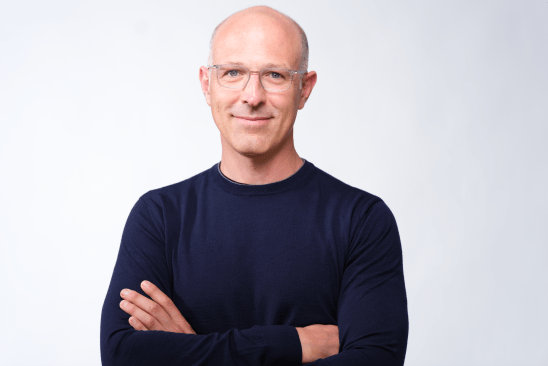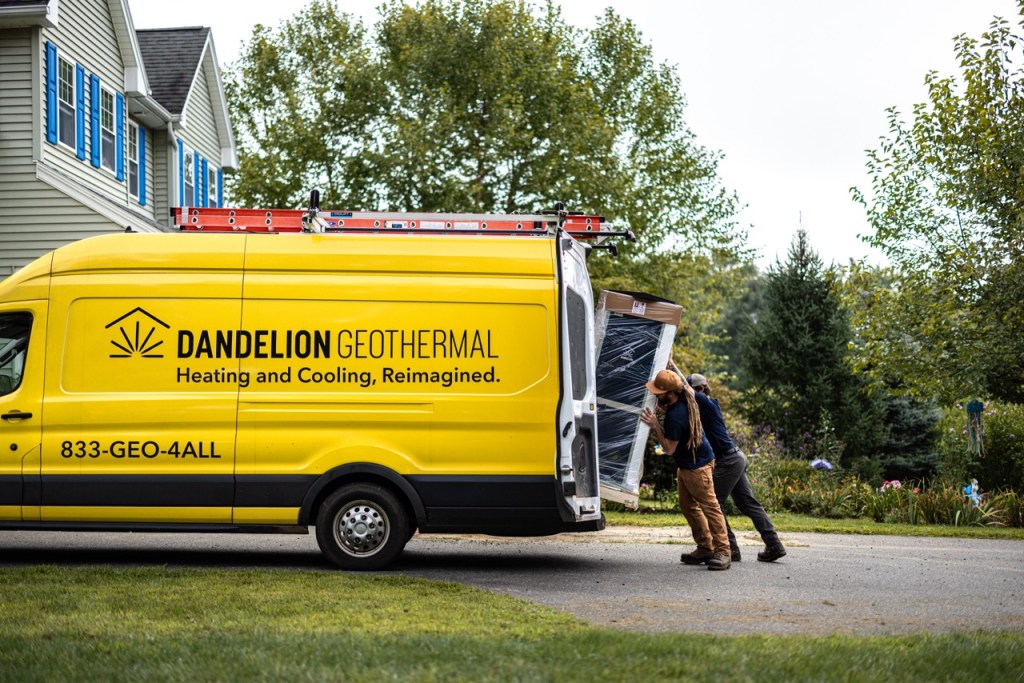Dandelion Energy, a geothermal company that launched its geothermal heat pump the Dandelion Geo nationwide in September, recently closed a $40 million Series C funding round. The round was led by Google Ventures and supported by Collaborative Fund, LenX, Breakthrough Energy Ventures, and NGP.
Dandelion Energy was founded in 2017 as a spinout of Google X’s Moonshot factory. Prior to the spinout, the team had been researching cost-effective geothermal solutions.
To date, Dandelion has done more than 2,000 residential installations, as well as single-family, town home, multifamily, and commercial developments.
On its website, Dandelion Energy touts several geothermal advantages for builders: no budget increases due to robust rebate programs and avoided costs; HERS reduction up to nine points; build cost reductions; low maintenance; no outdoor equipment; 50% to 70% reduction in utility bills for homeowners; and high performance in extreme weather with a coefficient of performance of up to 5.2. Through governmental geothermal incentives and energy efficient home credits, Dandelion Energy says its builders save money relative to conventional heating and cooling.
CEO Dan Yates told Builder the funding will help support the growth trajectory for Dandelion Energy, with a targeted 5x revenue growth over the next four years. Yates spoke with Builder to discuss the evolution of Dandelion Energy, the advantages of geothermal energy, and growth plans for the company.

Dan Yates, CEO of Dandelion Energy
What are the origins of Dandelion Energy and how does geothermal heating and cooling work?
Dandelion was founded out of Google X’s Moonshot factory. Kathy Hannun, our founder, was in that context and seeking to answer the question of how do we electrify heat globally.
The linchpin of heat electrification is the heat pump. It is this brilliant technology that uses a refrigeration cycle to move heat into homes instead of creating heat. The energy required to transfer heat is much less if you have access to a proximate heat source. The inside of geothermal is that in the middle of winter, the closest thing to your house that is warm enough to extract heat from efficiently is the earth beneath your feet. The earth is a year round store of solar energy. When you get about eight feet below the surface, you have a constant temperature year round. The magic of a refrigeration cycle is it can take lukewarm earth—in the U.S., shallow Earth temperatures are in the 50s and 60s—and concentrate it and then pump 115 degree heat into your house and heat your house to whatever temperature you want it set.
The original strategy of the business—which was a large part of the economics we were modeling and the available government incentives for geothermal—were oriented around direct consumer purchases to retrofit existing homes. We started the business in the Northeast focused on direct sales to consumers. We had a vertically integrated model where we came into the house, we designed the system, we sold it, we did the drilling outside, we installed the ground loop, we trenched the loop into the house, we did the interior installation, and did all the necessary electrical modifications and ductwork modifications to really flesh out your house.
How has the company evolved since it was founded in 2017?
In the past couple of years, a couple of things have happened that have made it possible for us to evolve our business model to expand nationally.. We have built our own proprietary heat pump from the ground up that we are selling nationally to installers in every state. [The pump] has the highest efficiency rating of any heat pump on the market. It performs like the highest end geothermal heat pumps out there and it is priced competitively with the mid range heat pumps. It also requires much less drilling because it is able to extract heat from colder earth so we can couple it with less drilling per project. It is very quiet and it has been optimized to operate in a retrofit environment where we don’t need as many ductwork modifications or electrical modifications.
The second thing is that the Inflation Reduction Act in 2022 changed the economics for home builders and multifamily builders for geothermal. There are just a ton of incentives that are locked for a decade that are available to builders that make geothermal cost-effective. We are now selling nationally, growing a nationwide team to partner with builders to help them put geothermal into their new developments. We are also working with multifamily developers across the country. We have some big projects that we are working on in the Midwest, the Mountain West, but also in the Northeast. The economics for multifamily builders is in many ways even better because if you build to own, not only do you get all the incentives that the government has put out to incentivize [energy-efficient] new construction, but you also get the tax credits from owning the building on an ongoing basis.
One other thing I would add, a built-in significant proprietary advantage that we have is we have a real feedback loop of data because of our existing seven year old and unprecedentedly large-scale direct to consumer business. [With] every one of those heat pumps, we have the possibility to collect data from those heat pumps. It gives us direct feedback on our design parameters. As we designed systems that optimized our cost and the installation, we can see how performant these systems are. It confirms all of our design methodologies. We have the ability to guarantee system performance because we know what is going to come out the other end because we have done it thousands of times.
What factors have enabled Dandelion Energy to scale on a nationwide basis?
Two things have enabled us to scale nationwide. One is that where we operate in our traditional direct to consumer markets, we’ll do the drilling and the ground loop and exterior installation. Then we are expanding those teams pretty rapidly. We have a couple areas that we are targeting for expansion, including the Mid-Atlantic, the Mountain West, and the Midwest. We’ll be adding crews in those regions in the coming years. Wherever we are not in operations yet with the drilling, we have a network of partner drillers who we have vetted who we can deploy on these large scale projects. We also have a robust partnership with a longstanding, well-established heat pump partner Enertech. Which many installers nationwide are familiar with their technology and we are able to train local HVAC installers who already work with these builders to install these heat pumps. Geothermal heat pumps are easier to install inside the house than a conventional heat pump because you don’t have to do any refrigerant line set runs, all of the refrigerant is inside – it’s a single-package unit.
How are builders and multifamily developers responding to the geothermal message?
Builders are at a fork in the road. They are being pushed to electrify their developments. The status quo was a natural gas furnace and electric air conditioner. Now, they are moving into heat pumps and they have a choice: they can go with an air source heat pump, or they can go with a geothermal heat pump.
The greatest builders in the U.S. care about the home buyer experience. The quality of the home and operating costs. There is just this moment across the country where builders across the country are wrestling with this tradeoff. There’s been a lot of talk about can air source heat pumps heat homes and in most cases they can. What isn’t talked about enough is at what cost? Even where they work, you are seeing this 60-100% increase in utility bills. With the incentives making [geothermal] affordable, it’s a no regrets win [for builders]. It’s an upgrade to the customer experience. That is the moment we are at right now. We feel very confident and enthusiastic that we are better positioned than anyone else to help partner with builders to make that transition [to electrification].
What are the growth plans for Dandelion Energy?
We have plans to 5x the business in the next four years. We think we are going to do that and go from there. The other thing that I would add, the biggest deals we are having with builder partners are not with high-end builders. They are with builders that build homes from $400,000 to $800,000 per home or townhome. We are also talking and we have a robust pipeline in the $1 million [plus] corner of the market. People historically assume geothermal lands with the very wealthy. These changes, these reckoning about the heat pump transition and the affordability borne out by these new incentives has made it [more affordable]. The area of greatest attraction for us is mainstream builders.
Keep the conversation going—sign up to our newsletter for exclusive content and updates. Sign up for free.



